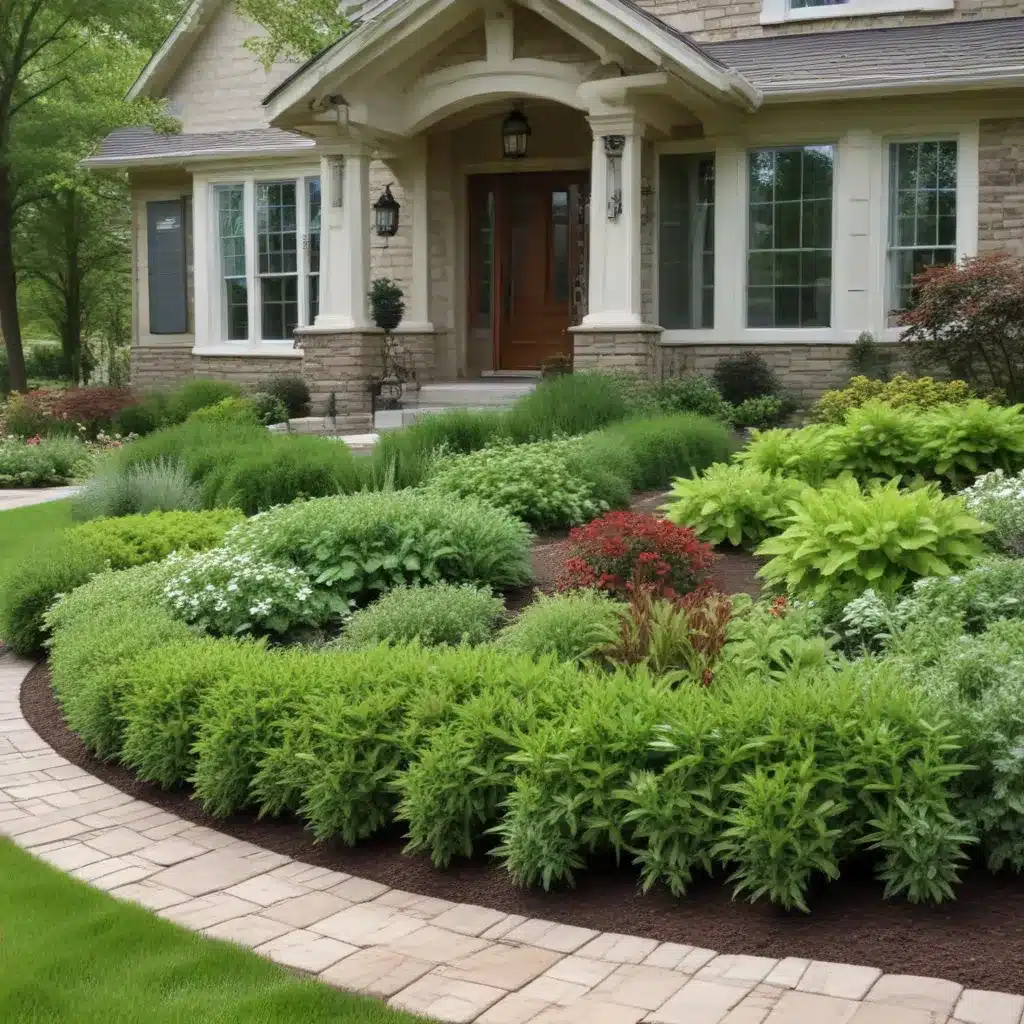
Sustainable Landscaping: Enhancing Curb Appeal Eco-Consciously
In the world of real estate, first impressions matter. Potential buyers form an opinion about a property within seconds of focusing on it, and this is where curb appeal comes into play – that magical quality that entices passersby and prospective buyers alike. But in the age of environmental consciousness, traditional landscaping practices might not cut it anymore. This is where the concept of sustainable landscaping comes in – an innovative approach that beautifies your property while contributing to a healthier planet.
Sustainable landscaping, often referred to as eco-friendly or green landscaping, is more than just planting a few trees or installing a sprinkler system. It’s about creating a harmonious balance between the natural environment and human habitation. With increasing concerns about climate change, water scarcity, and habitat loss, sustainable landscaping has emerged as a solution that resonates with property owners and the planet.
Eco-Friendly Landscaping Principles
Embracing sustainable landscaping starts with understanding its core principles. Let’s delve into the key elements that define this eco-conscious approach.
Native Plant Selection
Choosing plants native to your region is essential for sustainable landscaping. These plants are adapted to the local climate, requiring less water and maintenance. They are also more resistant to pests, reducing the need for harmful pesticides. By incorporating a diverse array of native species, you can not only create a visually appealing landscape but also support the local ecosystem by providing food and habitat for native wildlife.
Water Conservation Strategies
Water scarcity is a pressing issue in many parts of the world, and sustainable landscaping prioritizes water conservation. Techniques like xeriscaping, which involves using drought-resistant plants and efficient irrigation systems, can significantly reduce water usage. Additionally, incorporating rainwater harvesting systems that collect and store rainwater for landscape irrigation can further minimize the demand for municipal water sources.
Sustainable Lawn Care
Traditional lawns often rely on energy-intensive mowing, chemical fertilizers, and excessive water usage. Sustainable landscaping offers an alternative by embracing eco-friendly lawn care practices. This may include choosing drought-tolerant grass varieties, implementing mulching techniques to retain soil moisture, and minimizing the use of synthetic chemicals in favor of organic alternatives.
Landscape Design for Curb Appeal
Sustainable landscaping not only benefits the environment but also enhances the visual appeal of your property, making it a win-win for eco-conscious homeowners and potential buyers.
Hardscape Elements
Incorporating permeable paving materials for driveways, pathways, and patios is a crucial aspect of sustainable landscaping. These materials, such as porous pavers or permeable concrete, allow rainwater to infiltrate the ground, reducing runoff and recharging groundwater. This not only helps mitigate stormwater management issues but also contributes to a more visually appealing and eco-friendly landscape.
Color and Texture
Sustainable landscaping embraces a diverse palette of native plants, which can create a vibrant and visually striking outdoor space. By carefully selecting plants with varying colors, textures, and bloom cycles, you can curate a layered and dynamic landscape that captivates potential buyers and enhances your property’s curb appeal.
Integrated Aesthetics
Sustainable landscaping is not just about environmental considerations; it’s also about seamlessly integrating the outdoor space with the overall architectural style and aesthetics of the property. By aligning the landscape design with the home’s architectural features, you can create a harmonious and aesthetically pleasing visual experience that showcases the property’s unique character.
Environmental Impact Considerations
Sustainable landscaping goes beyond just enhancing curb appeal; it also addresses the broader environmental implications of your outdoor space.
Biodiversity and Habitat Protection
Traditional landscapes often consist of a single type of grass or non-native ornamental plants, which offer limited habitat and food sources for local wildlife. Sustainable landscaping, on the other hand, embraces a diverse array of native plants that attract birds, butterflies, and other beneficial insects, creating a thriving ecosystem and promoting biodiversity.
Reducing Carbon Footprint
Strategically placed trees and shrubs can provide shade and reduce the need for air conditioning during hot months, improving the property’s energy efficiency. Additionally, the incorporation of renewable energy sources, such as solar-powered outdoor lighting, can further contribute to a reduced carbon footprint.
Waste Management
Sustainable landscaping also considers the management of landscape waste. Implementing composting and mulching practices can divert organic waste from landfills, while also improving soil health and reducing the need for synthetic fertilizers.
Maintenance and Long-Term Sustainability
Sustainable landscaping is not just a one-time investment; it’s a long-term commitment to maintaining an eco-friendly and visually appealing outdoor space.
Integrated Pest Management
Sustainable landscaping prioritizes the use of natural and organic pest control methods over synthetic pesticides. This approach not only protects the environment but also ensures the safety of your family and pets.
Renewable Energy Integration
Incorporating renewable energy sources, such as solar-powered irrigation systems or landscape lighting, can further enhance the long-term sustainability of your outdoor space by reducing the reliance on traditional energy sources.
Ongoing Adaptability
Sustainable landscaping is a dynamic process that requires ongoing monitoring and adaptability. As climate and environmental conditions change, it’s essential to continually evaluate and adjust your landscape management practices to ensure the long-term viability and resilience of your outdoor space.
Embracing sustainable landscaping is not just an eco-conscious choice; it’s an investment in the long-term value and appeal of your property. By incorporating native plants, water-efficient practices, and eco-friendly design elements, you can create an outdoor space that not only captivates potential buyers but also contributes to a healthier planet.
To learn more about sustainable landscaping and other eco-friendly home improvement strategies, be sure to visit Reluctant Renovator, a leading resource for budget-friendly, family-friendly, and inspirational renovation insights.



